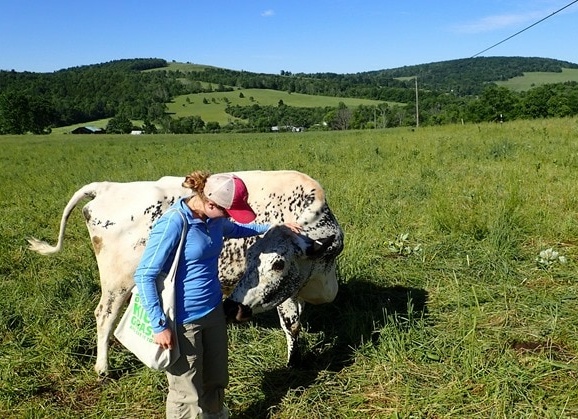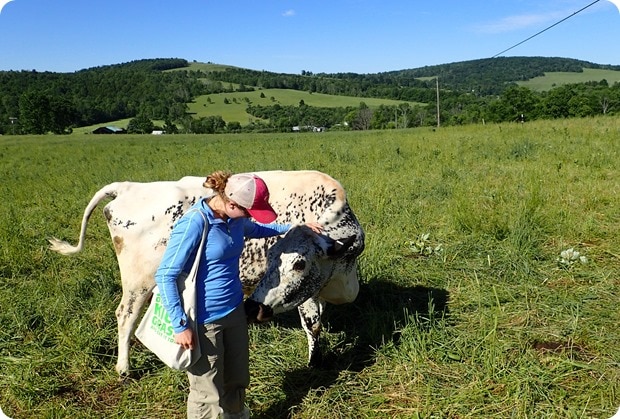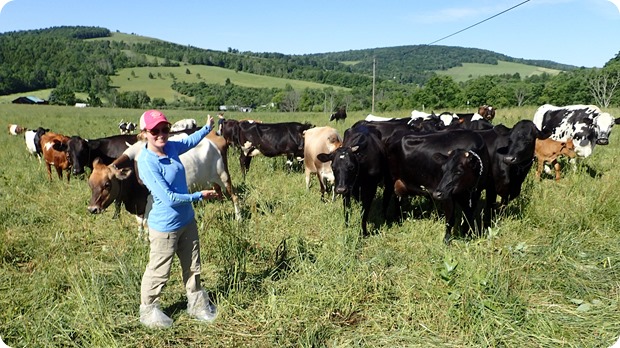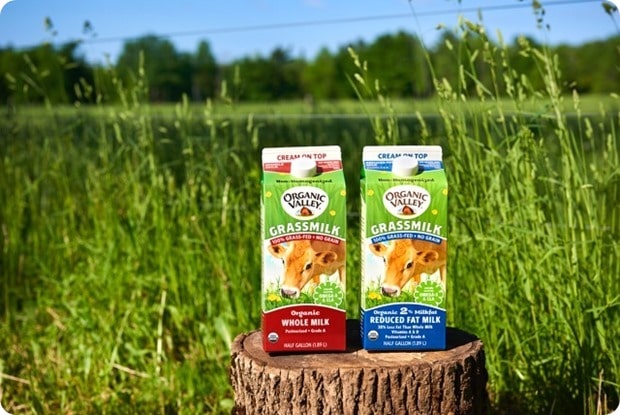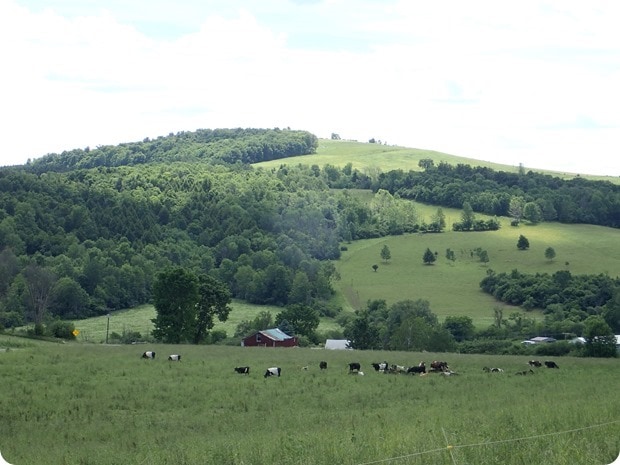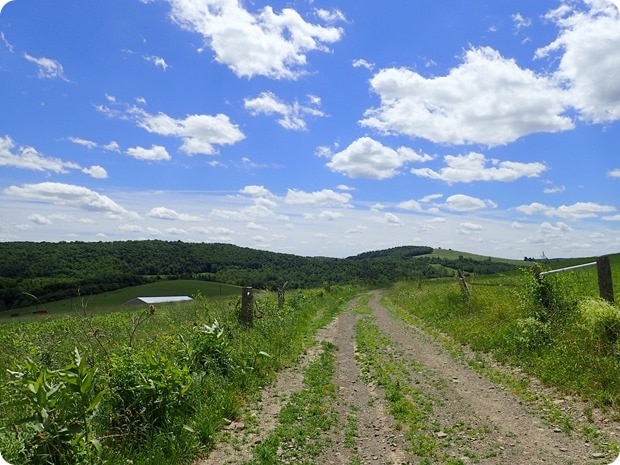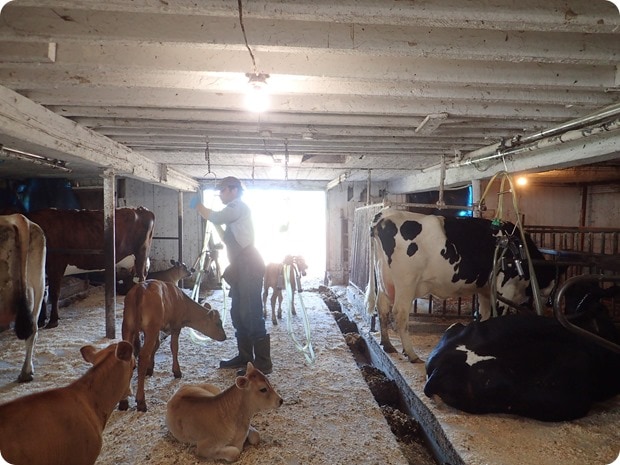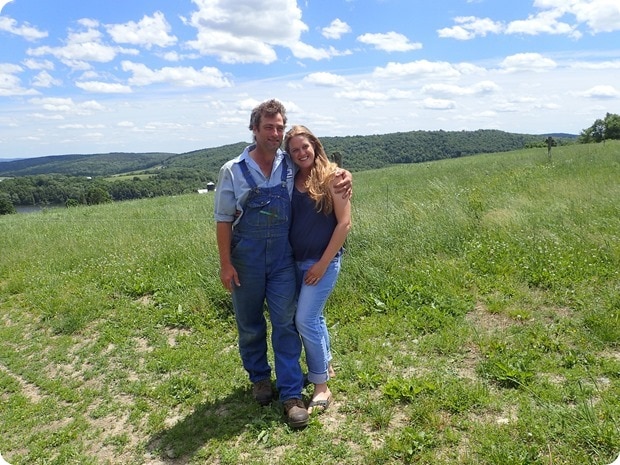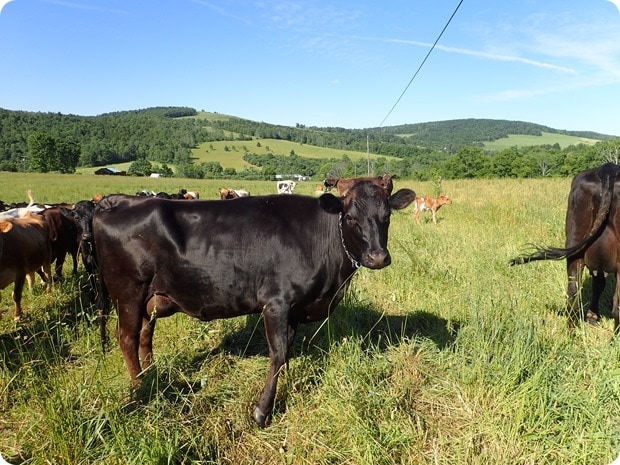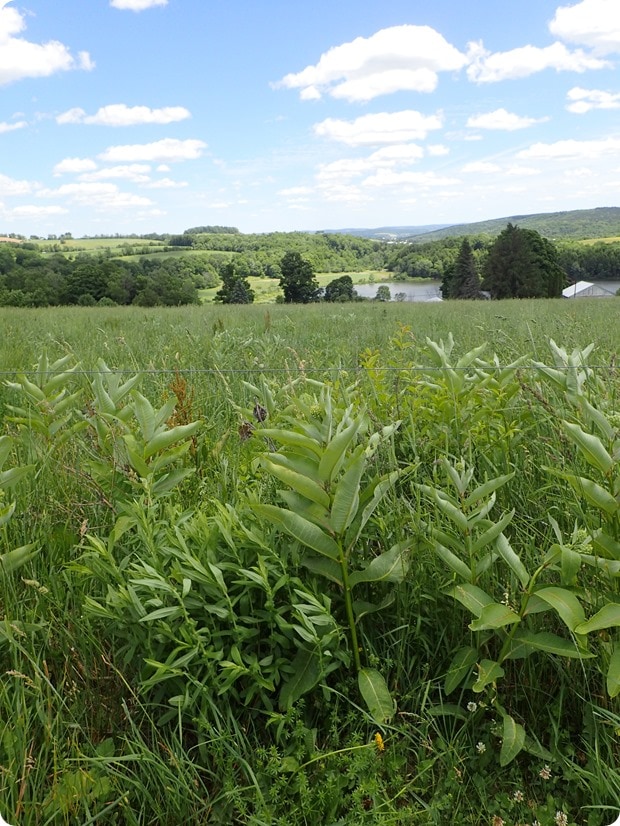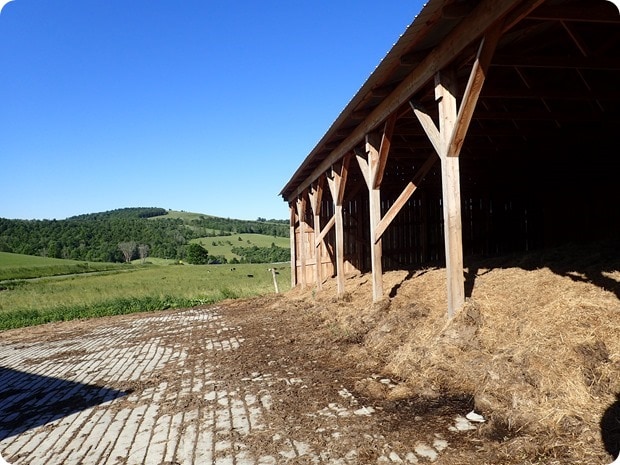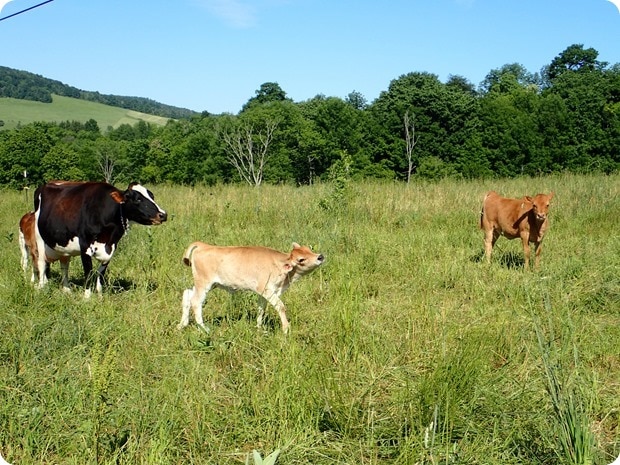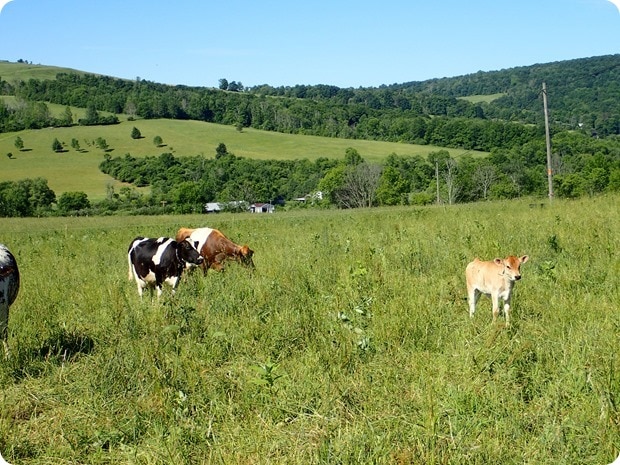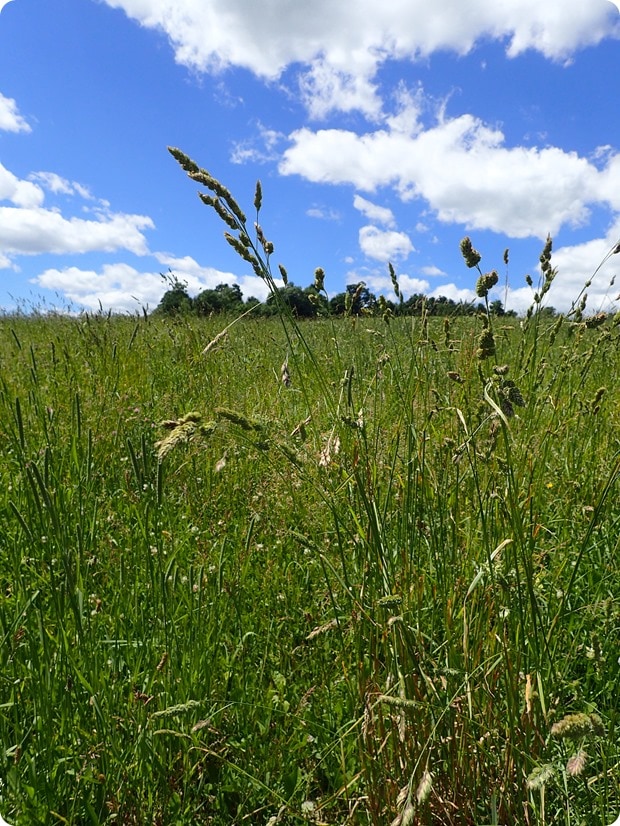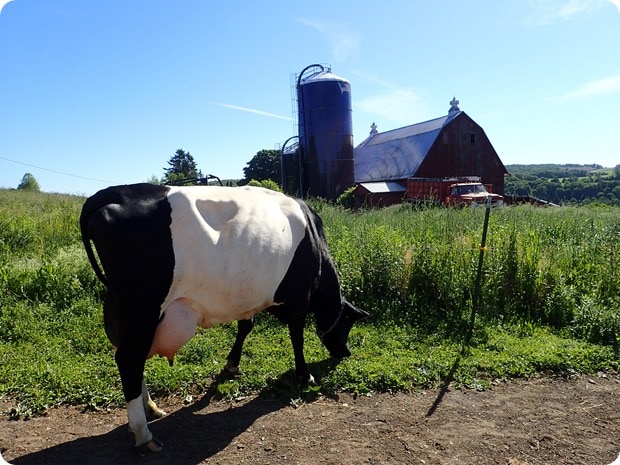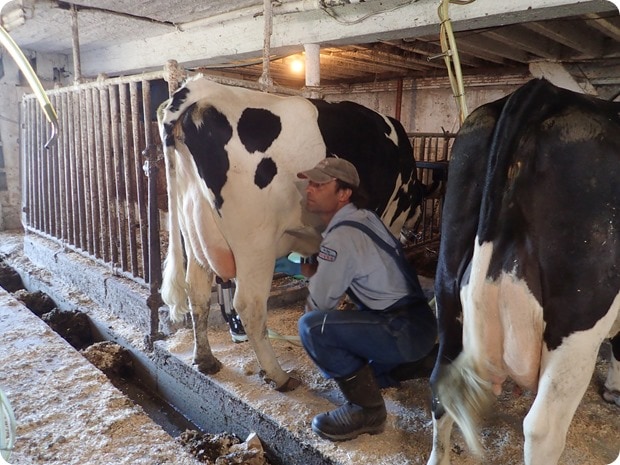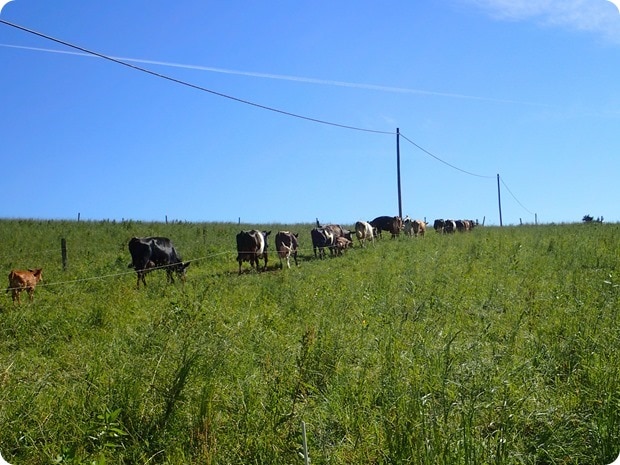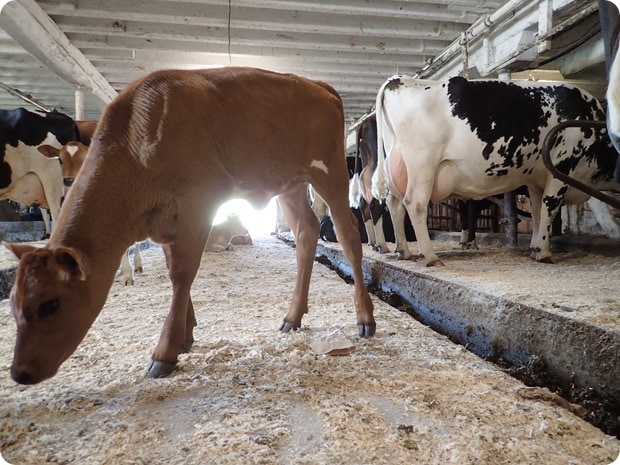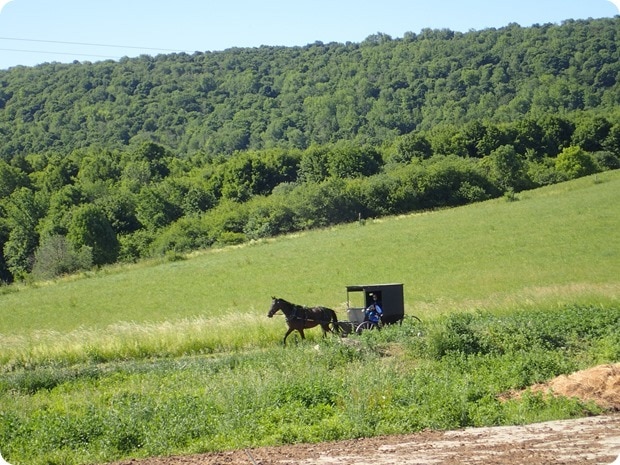A few weeks ago, I had the pleasure of spending a day at an Organic Valley Grassmilk farm in New York.
Want to save this post?
Enter your email below and get it sent straight to your inbox. Plus, I'll send you great content every week!
Organic Valley is America’s largest cooperative of organic farmers. Formed in 1988, it now represents more than 1,800 farmers in 36 states. I love Organic Valley and buy their whole milk every week. Not only is their milk delicious and organic, but they also use a regional model where milk is produced, bottled and distributed right in the region where it is farmed to support local economies. Awesome!
A couple years ago, I started seeing a new milk product from Organic Valley in stores – “Grassmilk.” Have you guys seen this yet? I started buying the whole milk Grassmilk out of curiosity, alternating it with their regular organic milk basically just depending what was available in store.
So – when I was invited on a press trip farm tour with the brand to learn more about the production behind their Grassmilk dairy products (Grassmilk cheese and yogurt were also introduced recently), I was intrigued. Sign me up!
I traveled to Stone Mill Dairy, the farm home of David and Michelle Stratton and one of Organic Valley’s 81 Grassmilk dairies, to learn more straight from the source.
David and Michelle were lovely hosts – thank you so much to them for taking time out of their busy schedules to let us watch them in action on their beautiful farm.
Fun fact: Michelle is a nurse and was living and working in NYC until a few years ago, when she moved home to Syracuse and met David on Match.com. They fell in love, got married, and now work on the farm together, although she still sneaks away 2 days a week to practice as a nurse in Syracuse. Talk about a change in lifestyle – so romantic, right? 🙂
So – what’s the difference between organic dairy and 100% grassfed organic dairy? That was my main question. Let’s start with organic.
Being certified organic includes the following:
- Utilization of natural means of pest control/prevention. Absolutely no use of prohibited materials (antibiotics, growth hormones, etc.)
- Maintaining low levels of environmental pollution.
- Not using any GMOs (Genetically Modified Organisms)
- Adhering to a certain standard of animal control, focusing on humane treatment.
- Cows must be at pasture for a minimum of 120 days per year, and get at least 30% of their dry matter intake from grass.
- Organically managed cows must also be given daily access to the outdoors during the non-grazing season – e.g. shade, shelter, fresh air, direct sunlight, exercise areas.
- Cows have to be fed and treated to meet organic standards for a full 12 months before their milk can be sold as organic.
See also: 5 reasons to eat organic.
An organic cow’s diet consists of grass and a little bit of grain (corn, barley, etc. — about 5 lbs., if that). In the winter, they eat stored forage: either haylage (chopped, fermented hay), or round bales of hay (longer-stemmed – wrapped to ferment), plus grain (anywhere from 5-15 lbs. per day per cow). A conventional diet, on the other hand, would consist of corn silage (chopped, fermented corn) and grain (corn and soy). Some haylage may also be mixed in, but the cows are not usually out on grass.
100% grassfed organic dairy farms follow the same organic standards, but they take it to another level by only feeding the cows grass. No grain, soy, or corn are allowed, even if they are organic – only fresh grasses and dried forages, like hay (for winter, when pasture grazing isn’t an option). David told us that cows are fine with cold weather, but they don’t like wind or being wet. He built a winter shelter for them recently, strategically placed so it will block the wind and keep them dry when necessary.
The key with 100% grassfed cows is that the grass has to be excellent quality to ensure the cows stay healthy! David employs an approach called rotational grazing, which maximizes nutrients both in the land and for the cows themselves. This just means that cows are frequently rotated to new areas of the pasture, letting them graze on fresh grass and allowing the other areas time to re-grow. David rotates his cows to new grass daily (usually twice daily), and they get back to the same spot about a month later. He even has a more wooded/shaded area of his pasture (you can see it in the photo below in the back) that he rotates the cows to when it starts getting too hot out for them – smart!
Another thing that is very important with 100% grassfed cows is ensuring that the pastures feature a variety of different kinds of grass, forbs (dandelions, etc.), and legumes (e.g. alfalfa), because the varied, diverse nutrient profiles are important for the cows. David’s pastures had over 100 varieties of herbaceous plants – amazing!
We learned more about grass nutrition and the importance of diversity from Dr. Guy Jodarski, one of Organic Valley’s Staff Veterinarians, who joined us on the trip. Apparently the cows are good at choosing how much of which kinds of grass they need to eat any given day, which I thought was cool. Very intuitive eaters! 🙂 Young grass is higher in protein while mature grass has less protein and more carbs, so they vary their intake based on need – fascinating! David used to graze the cows on shorter grass that was one height, but now has tall grass so the cows can do their own self-regulation as nature intended. When storing grass for winter use, David marks each bale to note its nutrition (e.g. high or low protein) and watches the body condition of the cows to see which they need at any given time.
So – why feed cows grass vs. grain? The health benefits of grassfed milk compared to grain fed have been found in numerous scientific studies and meta-analyses, including a 2013 Washington State University study published in the scientific journal PLOS ONE. 100% grassfed dairy is full of naturally-occurring calcium, omega-3 fatty acids, and conjugated linoleic acid (CLA).
Eating too much grain is not good for the cows as it makes their stomach pH too acidic, leading to potential health problems for the cow. In terms of the milk’s nutrition, grain also changes the omega-6 to omega-3 fatty acid ratio in the milk; there is a linear relationship between more grain leading to more omega-6 in the milk. The ratio of omega-6 to omega-3 polyunsaturated fats in the American diet has changed in general; between 1935 and 1939, the ratio of omega-6 to omega-3 fatty acids was reported to be 8.4:1; today, estimates of the ratio range from an average of 10:1 to 20:1, with a ratio as high as 25:1 in some.
Omega-6 does have a function, but it is also pro-inflammatory, and inflammation in the body can be a factor in increased heart disease risk; in fact, elevated omega-6 intakes have been associated with an increase in all inflammatory diseases. On the flipside, studies are showing that a lower ratio of omega-6 to omega-3 (so, more omega-3 intake – and/or less omega-6) can reduce the risk of chronic diseases. Higher levels of long chain omega-3s in the blood have been shown to potentially protect against degenerative diseases, and research also shows strong evidence that the omega-3s EPA and DHA can help lower triglycerides and blood pressure.
And guess what? The more grass cows are fed, the better that omega-3 to omega-6 ratio is. I was shocked when we were shown this slide showing the average differences in ratios from conventional, regular organic, and 100% grassfed organic milk.
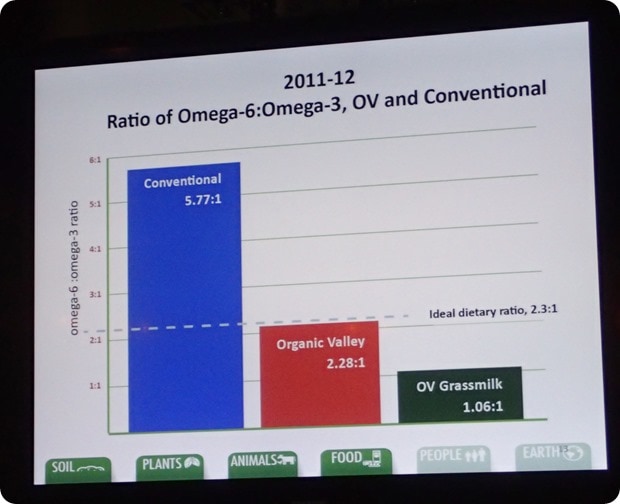 Sources: previously referenced WSU study + an internal Organic Valley study
Sources: previously referenced WSU study + an internal Organic Valley study
For now, 100% grassfed milk standards are internal, and there isn’t a common industry standard regarding rules and regulations for 100% grassfed dairy products (beyond the obvious – that the cows must be 100% grassfed when milked).
That said, in 2015 Organic Valley hired Mark Lipson, a former USDA organic policy advisor and current research associate at the Center for Agroecology & Sustainable Food Systems, University of California, Santa Cruz, as a consultant to help facilitate a team of stakeholders to recommend a common industry standard. The stakeholders team is led by the American Grassfed Association (AGA) and includes Organic Valley, organic certifiers, producers, manufacturers, retailers and farmers. The result of this collaborative process should protect and benefit farmer and consumer alike and maintain the integrity of grass-fed dairy product claims. Items up for debate are things like how long the cows must be grain-free before their milk can be sold as 100% grassmilk (Organic Valley currently requires 60 days), whether calves (baby cows) can have grain at all before they become milkers, and whether certain supplements (like flax, which is not currently allowed, or molasses and kelp, which are allowed) are okay.
I asked David why he went to 100% grassfed – especially considering he did so before Organic Valley was paying extra premiums for 100% grassfed milk (because they hadn’t come out with their Grassmilk products yet). His reply was simple: “It just seemed like the right thing to do.” Can’t argue with that! And given how happy and healthy his cows were, he is certainly doing something right.
One of my favorite things about the trip was just seeing how much David and Michelle care for the cows. As David said, “I’m doing this because I love the cows – it doesn’t feel like work to me.” It shows, and the cows know it – all he has to do is whistle and the cows come running in from the pasture, ready to stroll on their own to the barn for milking twice a day.
Once the cows are done being milked, they can leave the barn at their own leisure. Some of them even stayed and hung out along with a rowdy bunch of calves – too cute!
As you can see, I had a fun and informative day on the farm. Another big thank you to farm owners David and Michelle Stratton for having us and to Organic Valley for covering my expenses for the trip and for sponsoring this post!
I will leave you with a fun fact: just over 40% of Organic Valley’s farmers are Amish – how cool! We had the pleasure of having dinner on the first night of our trip with David and Michelle and two other farm couples, including an Amish couple that also owned a 100% grassfed dairy farm. It was fascinating to learn more about their culture!
Want to try Organic Valley Grassmilk for yourself? Enter below – 10 lucky readers will win a one month supply of Grassmilk (in free product coupon form)!


